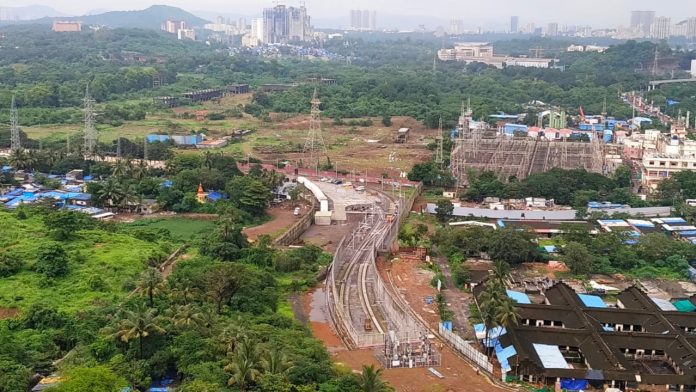Man’s utter carelessness and ignorance towards nature have led to many natural calamities in the recent past, be it wildfires or floods. What’s worse, these incidents are rising by the day. Be it the ghastly forest fires in Australia that led to heavy loss of habitat, the heatwave that claimed the lives of around 500 people in the US and Canada, or multiple cyclones and floods that hit Indian states like Maharashtra, Assam, West Bengal, Odisha, the havoc causing floods that recently hit Pakistan’s Karachi or the 7.4 magnitude earthquake that rocked Haiti, killing around 2000 people. Climate change has turned out to be a grave reality and a serious threat to life on Earth.
Regardless of this, governments across the world still continue to give a green flag to industrial companies largely responsible for pollution. They also invest heavily in large infrastructure projects under the garb of ‘development’ causing serious damage to nature.
Mumbai’s Aarey Milk Colony is currently facing the same struggle. In 2014, the BJP government in the state announced the building of a car shed for the 33.5 km underground Colaba-Bandra-SEEPZ Metro project.
This project is believed to wipe out 2,646 trees, and threaten the livelihoods of around 8,000 tribal people in the area. The region is also home to over 300 species of flora and fauna.
Massive protests have been conducted by environmentalists and city swellers against the government project. In 2020, the MVA government reversed the decision of the previous BJP government bringing some relief to the protestors. However, the newly formed Shinde government in coalition with the BJP decided to undo the former government’s decision on Aarey, stating that this move is crucial for ‘development’.
Fresh protests have spurred with protestors raising slogans such as ‘Save Aarey, Save Mumbai!‘. They are also using improvised songs from original Hindi numbers, like: ‘Dekho maine dekha hai ek sapna, Aarey ko bachana mission apna… tu aarey aarey aarey, aaja!‘ to attract more awareness about the protests.
Protests were also held in several other Indian cities including Nagpur, Hyderabad, Adilabad, Agra, Gurgaon, Greater Noida, Patna, Jammu, Chandigarh and Ujjain.
India is not the only country witnessing such protests to limit the perils of climate change. Citizens of other countries too are taking active steps to fight climate change. Recently, in March 2022, the activism network ‘Fridays for Future’ conducted its 10th global climate strike in different parts of the world. The slogan, “People not Profit” was chanted by thousands of protestors, especially the youth. The protests erupted in parts of Asia, Australia, Europe as well as America, attracting the attention of the entire world yet again.
Climate activist Greta Thunberg too joined the protests taking to the streets of Stockholm, Sweden.
Many environmental activists also spoke during a press conference on the effort to curb greenhouse gas emissions as part of the climate strike in Seoul, South Korea.
Students held up banners during a rally in front of the parliament in Athens, Greece. Many assembled at Syntagma square to protest climate change. They were seen holding placards reading, “I want a hot date, not a hot planet.”
As corrective steps towards keeping climate change in check, United Nations and its member countries are working towards achieving their Net Zero targets (cutting greenhouse gas emissions as close to zero.)
Further, as per the Intergovernmental Panel on Climate Change (IPCC), “Global CO2 emissions are required to fall by around 45% from 2010 levels by 2030, reaching ‘net zero’ target by 2050” to keep global warming to 1.5°C. The total greenhouse gas emissions must fall to zero between 2063 and 2068.
Indian Prime Minister Narendra Modi has announced that India will achieve its Net Zero target by 2070. This is how it plans to reach its goal:
- It will get its non-fossil energy capacity to 500 gigawatts (GW) by 2030
- 50% of the country’s energy requirements will be met from renewable energy by 2030
- It will reduce the total projected carbon emissions by one billion tonnes from now onwards till 2030
- India will also strive to reduce the carbon intensity of its economy by less than 45 per cent by 2030.
A total of 137 countries out of 192 signatories of the UN Climate Convention have pledged to achieve their Net Zero targets by 2050.
So, with net-zero and other action plans, governments across all nations have their own way to safeguard the environment and make Earth a better place for future generations.
It’s not only the responsibility of the governments to save nature but of the citizens too. On an individual level, besides protesting, we can also bring about a few changes such as using public transport, planting more trees, reducing carbon footprint, etc.
Even the great actor and environmentalist Leonardo Di Caprio has said, “Climate change is real. It is happening right now, it is the most urgent threat facing our entire species and we need to work collectively together and stop procrastinating.”





























